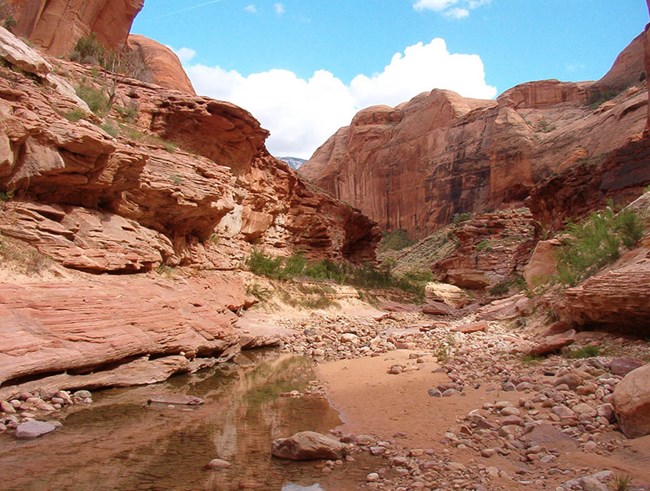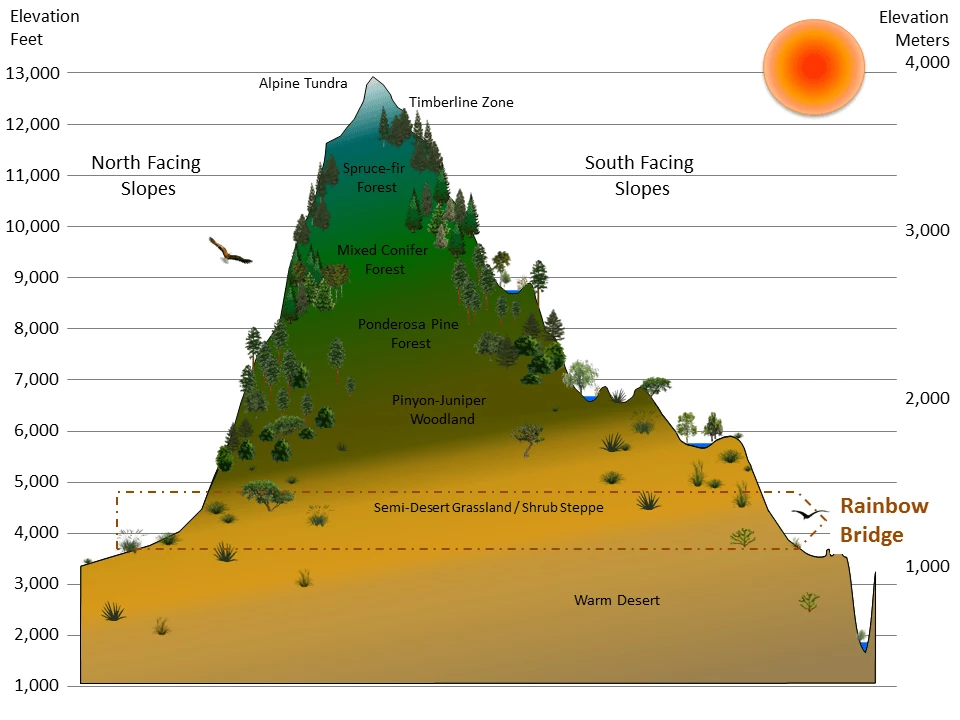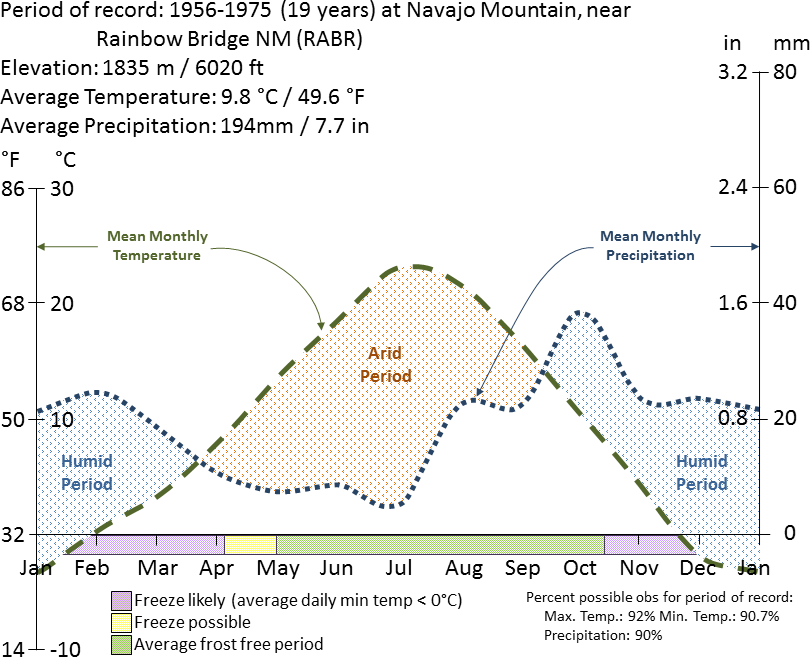
NPS / SCPN
Rainbow Bridge National Monument encompasses 160 acres (65 ha) in south-central Utah, and is contiguous with Glen Canyon National Recreation Area. The monument was established in 1910 to preserve the world's largest natural bridge. The stone arch of Rainbow Bridge is a sacred place to most Native American tribes throughout the southwest.
Rainbow Bridge lies deep within a slickrock wilderness of rugged canyon lands in Bridge Canyon. Grassland and shrubland plant communities predominate in the monument, which supports 7 amphibian, 311 bird, 27 fish, 64 mammal, and 28 reptile species. Bridge Creek drains Navajo Mountain and flows beneath Rainbow Bridge and into Lake Powell.
Currently, the Southern Colorado Plateau Network is not conducting any field-based monitoring in Rainbow Bridge NM.
Select a Park:
Select a Species Category (optional):
Visit NPSpecies for more comprehensive information and advanced search capability. Have a suggestion or comment on this list? Let us know.
Life Zones
Rainbow Bridge NM ranges in elevation from 3,703 to 4,894 feet (1,129–1,492 m) and lies within the Semi-Desert Grassland/Shrub Steppe and Warm Desert life zones. The monument receives an average annual precipitation of 9.2 inches (233 mm).

Climate Summary Chart
Charts are an effective way to summarize and graphically represent climate variables. The following chart is based on the diagrams developed for vegetation studies by Walter and Lieth in 1967. Visit our climate page for more information.

Reports & Publications
Inventories are point-in-time surveys that help us learn about the resources in our parks. Information obtained through the Southern Colorado Plateau Network’s inventories of park resources helped to establish a base level of data, which has served as a starting point for our natural resource monitoring.
Source: NPS DataStore Saved Search 3515 (results presented are a subset). To search for additional information, visit the NPS DataStore.
Source: NPS DataStore Saved Search 3280 (results presented are a subset). To search for additional information, visit the NPS DataStore.
Last updated: November 6, 2018
